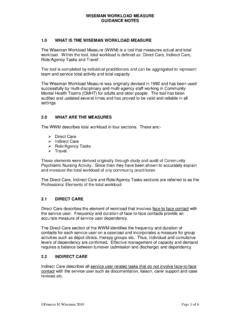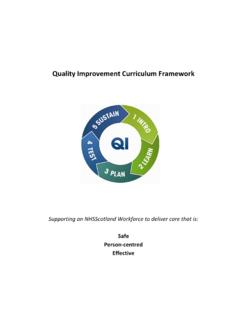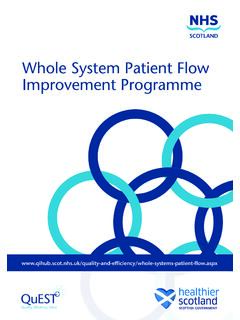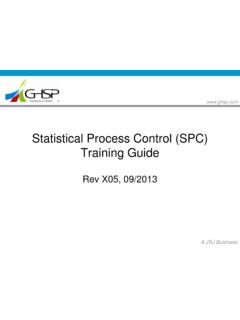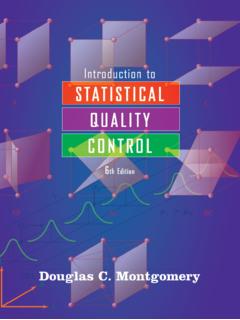Transcription of Interpreting Statistical Process Control (SPC) Charts
1 Interpreting Statistical Process Control (SPC) Charts The main elements of an SPC chart are: - The data itself, which is data in order over time, usually shown as distinct data points with lines between. - The mean of the data. - The upper and lower Control limits (UCL and LCL), which are set depending on the type of SPC chart. Usually these are 3 standard deviations from the mean. Sometimes (and useful for interpretation) the chart will show thirds (1 and 2 standard deviations from the mean) between the mean and the Control limits. Interpreting an SPC chart There are 8 signs of special variation you should look for in an SPC chart: (Nelson rules for interpretation taken from ) Rule Description Chart Example Problem Indicated Rule 1 One point is more than 3 standard deviations from the mean. One sample (two shown in this case) is grossly out of Control . Rule 2 Nine (or more) points in a row are on the same side of the mean.
2 Some prolonged bias exists. Interpreting Statistical Process Control (SPC) Charts Rule 3 Six (or more) points in a row are continually increasing (or decreasing). A trend exists. Rule 4 Fourteen (or more) points in a row alternate in direction, increasing then decreasing. This much oscillation is beyond noise. This is directional and the position of the mean and size of the standard deviation do not affect this rule. Rule 5 Two (or three) out of three points in a row are more than 2 standard deviations from the mean in the same direction. There is a medium tendency for samples to be mediumly out of Control . The side of the mean for the third point is unspecified. Rule 6 Four (or five) out of five points in a row are more than 1 standard deviation from the mean in the same direction. There is a strong tendency for samples to be slightly out of Control . The side of the mean for the fifth point is unspecified. Rule 7 Fifteen points in a row are all within 1 standard deviation of the mean on either side of the mean.
3 With 1 standard deviation, greater variation would be expected. Rule 8 Eight points in a row exist with none within 1 standard deviation of the mean and the points are in both directions from the mean. Jumping from above to below whilst missing the first standard deviation band is rarely random.
